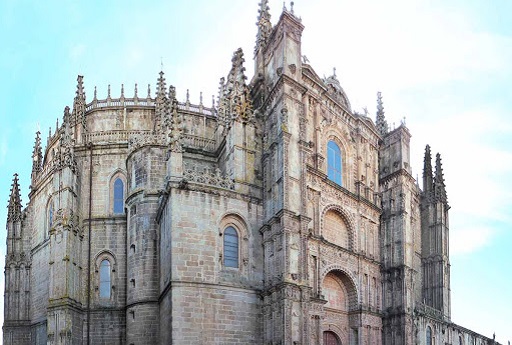
Cathedrals: New and old
It is about two cathedrals built successively , However, they are quite different from each other. The Old Cathedral is in the transitional style from Romanesque to Gothic, and externally its beautiful Romanesque façade stands out. Its construction began in the 12th century and it has three naves.The New Cathedral began to be built in the 15th century., although later his works were stopped due to unfinished. This is Renaissance style, whose cover will attract attention with a great plateresque style.
Direction: Plaza Catedral s / n
Schedule: ask schedule by phone *
Telephone: 927 424 406
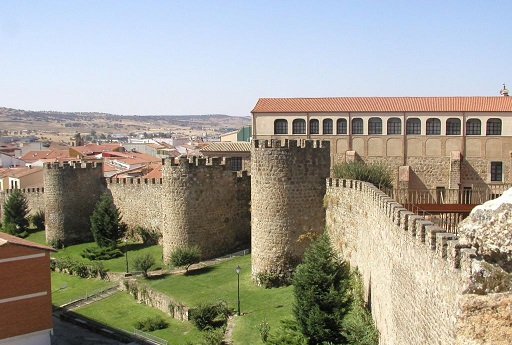
Ramparts
Despite the original fortification of the late 12th and early 13th centuries, now only some sections and doors are preserved, this wall came to have 75 cubes, of which remain 20, in addition to the different gates and towers that compose it.
Direction: Torre Lucía street s / n

Lucia Tower
It is located between the walled area of the city, and despite not having a great height, works as a lookout, and allows you to access the top of the walls and walk through them. It currently houses the Interpretation Center of the Fortress and the Medieval City of Plasencia, and your entrance is free, where they offer information about the ancient history of the city.
Direction: calle Torre Lucia s / n
Schedule: Tuesday to Saturday from 10.00 a 14.00 and of 16.00 a 18.00 h. In summer it is 10.00 a 14.00 and of 17.00 a 19.00 los domingos.

The door of the sun
This is the most important of all the gates in the wall that gave access to the old city, and is named for its orientation, as it is located on the south side of the wall. It is in the Renaissance style and has a virgin in the niche at the top. In front of it you can see an equestrian sculpture of King Alfonso VIII.
Direction: Puerta del Sol street
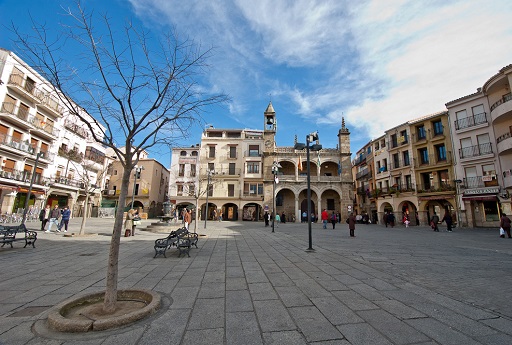
Main Square
The Plaza Mayor is the center of life in the city, always with an extraordinary atmosphere, with a wide variety of terraces and bars located in the arcaded galleries that extend throughout most of the square, es el sitio perfecto para disfrutar de unas buenas tapas. En ella se encuentran el Ayuntamiento, the narrowest building in Plasencia, in addition to a reddish building raised in 1936, to hide the view of the Church of San Esteban from the Plaza Mayor. In her, the market takes place every Tuesday, with fruits, vegetables, iron crafts or leather goods.
Direction: Main Square
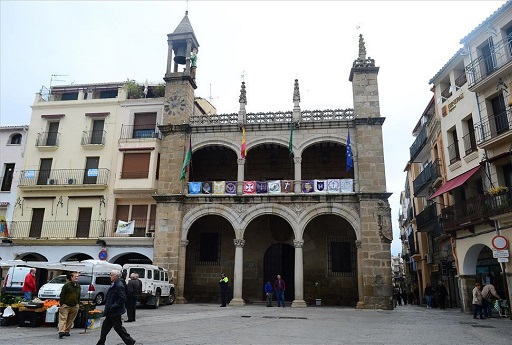
city Hall (town hall)
This is located on one of the sides of the Plaza Mayor, and although it is a small two-story building, has a character and style of its own renaissance gothic. It highlights the coat of arms of Emperor Charles I, and the little clock tower, where every hour Grandpa Mayorga rings the bell.
Direction: King Street 4
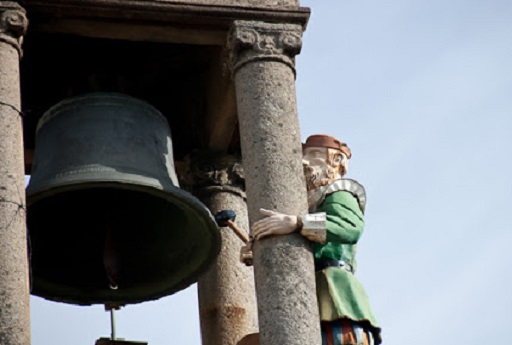
Grandpa Mayorga
This curious figure is found at the top of the town hall, and it has become a symbol of the city. The figure we currently see is not the original, since there have been different versions throughout history, the first of them dates from the 15th century.
Direction: Main Square 41
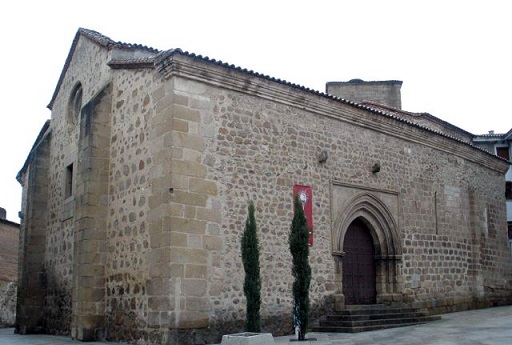
Plaza and Church of San Nicolás
Of all the churches that can be seen in Plasencia, that of San Nicolás is undoubtedly one of the oldest and most representative. It is located in the square that receives the same name, it was built in the 13th century, Romanesque portal and neo-Gothic façade, and in it the bell stands out, for being one of the oldest parts that the building still conserves.
In the Plaza de San Nicolás there is also the Palace of Los Marqueses de Mirabel, another of the great protagonists. It is a 15th century building, with a neoclassical two-story patio, and under the building you can see a large arch that the owners had to open to give access to the old Jewish Quarter of the city.
Direction: San Nicolás Square 1
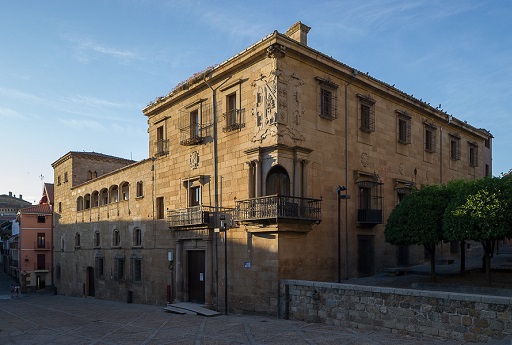
The Dean's House
This building is located right in front of the New Cathedral, and it is one of the best examples of civil architecture in historical Plasencia, that stands out above all, for its splendid balcony located in one of the corners.
Direction: Cathedral Square 6
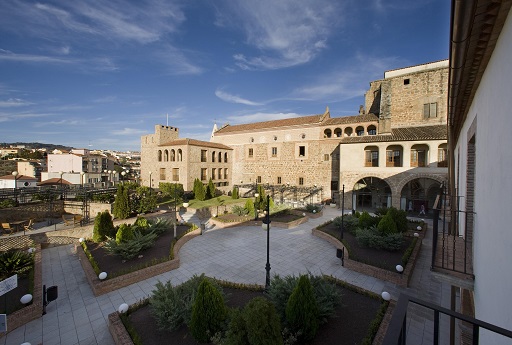
National Parador of Plasencia
At the end of the Plaza de San Nicolás, there is the building of the old Convent of San Vicente Ferrer, headquarters of the current Parador Nacional de Plasencia. This was built by the Lords of Zuñiga, in the fifteenth century, demolishing for it a part of the Jewish Quarter. In this convent stands out a Renaissance cloister or the old sacristy, decorated with Talavera tiles. In the National Parador you can also visit its stairway to the air, a great architectural work or eat in the old receiver.
Direction: San Vicente Ferrer Square
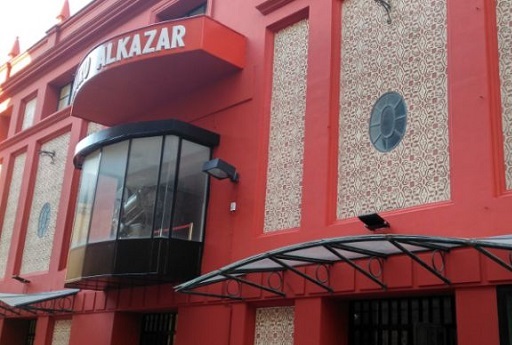
Alkázar Theater
It is the youngest building of all the historical monuments of the city, but despite this, it already has almost a century of history. In its facade we see reflected the peculiar style of the years 20, a curious contrast to the rest of the old town. Despite receiving the name of theater, it should be noted from during much of the twentieth century, it was used more as a cinema than as a theater.
Direction: Cruz de Santa Ana street s / n
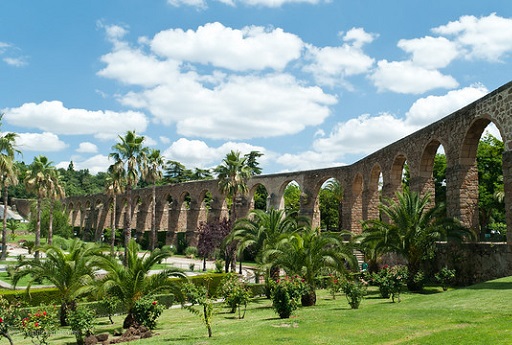
Plasencia aqueduct
The medieval aqueduct is another of the essential monuments of the city. It is located on the north side of the city, communicating the old town with the famous Parque de los Pinos, and has a length of 300 meters and 55 bows in total. It was built in the mid 16th century, with the aim of taking the water from the mountains to the different areas of the city.
Direction: Of. Salamanca 4